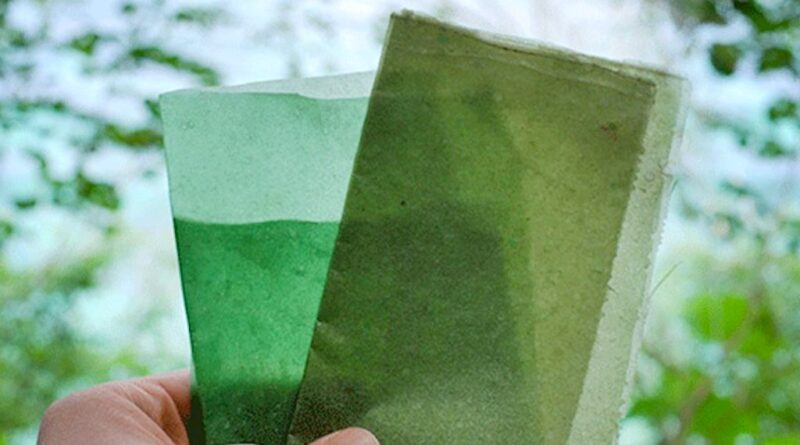The Effectiveness of Seaweed as Biomaterial
The seaweed farming and production industry has significantly grown during the last 20 years. Although this growth could be attributed to the popularity of seaweed as a food ingredient, there has been a growing interest in its uses as a sustainable biomaterial resource. Recent studies have described seaweed-derived polysaccharides to hold great potential as raw materials for bioplastic and biomedical technology, making seaweed highly effective for such applications.
The most well-known use of seaweed as a biomaterial is bioplastic. Seaweed-derived polysaccharides such as alginate, carrageenan, and agar are capable of rigid, non-toxic, and biodegradable gelation (Lomartire et al.). The chemical properties of these compounds enable the production of sustainable bioplastic films suitable for a variety of eco-friendly packaging applications. Currently, single-use plastic packaging accounts for 40% of total plastic usage, leaving a considerable impact on landfills and ocean pollution (Parker). The films created by the polysaccharides fully biodegrade in soil within four to six weeks and are soluble in water (Paslier; S C). The biodegradability of seaweed-based packaging allows for the safe disposal of such materials without the concern of plastic pollution. Although seaweed-based bioplastics are not durable enough for hard plastic applications, the increasing development of seaweed-based packaging films shows a definite shift. Joanne Oliver, an environmental science teacher at a local high school, states, “I think we’ll see a shift in those … relatively quick and I think that would be the best use of it.” A quick transition from conventional plastic packaging to seaweed-based packaging will effectively benefit the environment by drastically reducing packaging pollution.
Another recent involvement of seaweed as a biomaterial is biomedical technology. The biocompatibility of seaweed-derived polysaccharides provides a strong foundation for pharmaceutical applications such as drug delivery and tissue engineering. Nanoparticles formed from the seaweed-derived alginate contain high encapsulation efficiency of effective drugs which allows for prolonged material delivery (Venkatesan et al.). With chemical modifications, the drug delivery system with alginate nanoparticles has become an effective alternative for cancer treatment. Unlike chemotherapy, the drug-carrying nanoparticles are capable of delivering the drugs to target cancer cells without affecting the surrounding healthy cells. Such methods of treatment have efficiently treated liver cancer with therapeutic effects (Venkatesan et al.).
Modified seaweed-derived polysaccharides are also suitable in regenerative medicine for tissue engineering. Natural proteins and polysaccharides from seaweed processed with synthetic materials form an extracellular matrix suitable as scaffolding for the new tissue. The compounds processed in different ways allow biological interactions with connective tissue, vascularisation, and cell proliferation, and maintain the tissue phenotype (Carvalho et al.). These inherent properties combined with drug delivery effectively demonstrate the functionality of seaweed-derived polysaccharides in the biomedical field.
The growing interest in seaweed as a biomaterial has led to the advancement of bioplastics and biomedical technology. Polysaccharides found in seaweed such as alginate, carrageenan, and agar have shown properties suitable for bioplastic and biomedical applications. Seaweed-based bioplastics provide an optimistic future in reducing single-use plastic pollution. “What we will start to see is changes in things like plastic packaging. I do think we’ll start to see it in things like packaging fairly soon” (Oliver). In the biomedical field, seaweed-based polysaccharides fuel further developments in drug delivery and tissue engineering that provide effective alternatives for cancer treatment and regenerative medicine. With further research and ongoing popularity, seaweed can be an extremely promising biomaterial to minimise plastic pollution and improve healthcare for future generations.

